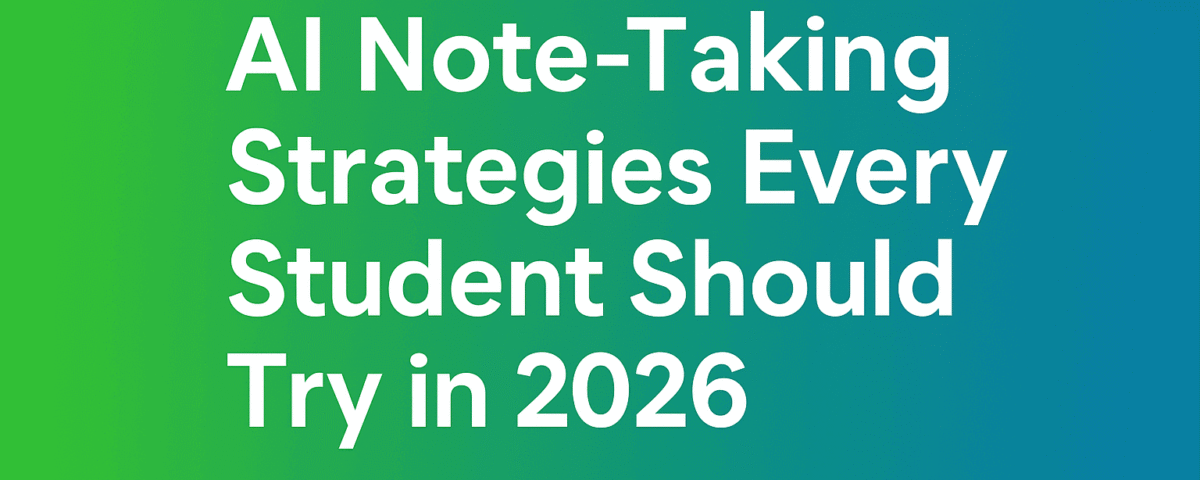Remote work is no longer a perk; it is part of how artificial intelligence teams operate. If you want a flexible role with real impact in remote AI jobs 2025, remote AI jobs offer a clear path.
This guide shows you how to find and land AI jobs from anywhere. You will learn what counts as remote, which roles pay well, the skills to build, where to search, and how to apply with proof of results. One quick stat to ground things: there are over 500,000 open AI and ML roles worldwide, with steady growth across 2025. See the breakdown in this overview of the AI engineer job outlook for 2025.
Whether you are a beginner, a career switcher, or a mid-level engineer, you will leave with a plan for your career in AI you can start this week.
Why remote AI jobs are booming in 2025 (and what counts as remote)

Remote AI work spans a wide set of roles: machine learning engineering, data labeling, natural language processing and computer vision, prompt design and evaluation, MLOps and LLM Ops, and fast-growing areas in artificial intelligence like compliance and security.
Demand is strongest in the U.S. and Western Europe, but hiring is global. Non-tech sectors are hiring at speed as well due to AI advancements, including finance, healthcare, retail, and education. Teams want people who can ship useful models, manage risks, and improve customer experiences.
Pay is strong across most roles. U.S. AI salaries often range from 120,000 to 150,000 dollars on average, with senior roles higher. For a market snapshot of in-demand skills and pay, review this practical summary: AI job market report for 2025.
Remote can mean different things:
- Fully remote, no office required.
- Hybrid, with optional office visits for planning or launches.
- Contract or freelance, project-based with flexible hours.
Benefits for AI professionals include broader access to top companies, flexible schedules, and pay that is not capped by your zip code. You get to work on real products used by customers worldwide. For companies, remote work unlocks a larger talent pool, faster hiring, and time zone coverage for 24-hour progress.
Two common myths get in the way:
- You do not need a PhD. Many teams hire based on shipped projects and skills.
- Not every job is heavy coding. Roles in compliance, annotation, QA, and operations are growing fast.
💼 Top Remote AI Job Roles in 2025
| Role | Average Salary (Remote) | Key Focus |
|---|---|---|
| Machine Learning Engineer | $100K–$150K | Build and optimize ML models |
| Data Scientist | $90K–$130K | Analyze data and predict outcomes |
| AI Research Assistant | $70K–$120K | Support research teams remotely |
| Prompt Engineer / AI Content Specialist | $60K–$110K | Create and refine AI-generated content |
| AI Product Manager | $100K–$160K | Manage AI-driven product roadmaps |
| AI Automation Developer (No-Code) | $50K–$90K | Use tools like Zapier, Make, or ChatGPT to automate workflows |
Short examples you might see on job boards:
- A bank hires a remote ML engineer to detect fraud in real time.
- A retailer hires a prompt engineer to improve chatbot accuracy for returns and order tracking.
- A startup brings in an AI compliance analyst to meet new privacy and model transparency rules.
High‑paying remote AI roles you can get now

Hiring spans many industries beyond tech, like healthcare, finance, and manufacturing. These opportunities extend to career paths for data engineers, software engineers, and robotics engineers, alongside core AI positions. For a sector-by-sector view, see who is hiring AI talent in this industry roundup: AI hiring by industry in 2025.
Machine learning engineer: core builder of artificial intelligence systems
- What they do: develop new model systems; build, train, and tune machine learning models, including predictive models; ship to production; track metrics and costs.
- Tools: Python, PyTorch or TensorFlow, scikit-learn, cloud platforms, Git, Docker, experiment tracking.
- Impact: improves product performance, reduces manual work, and supports key business goals, much like the work of data scientists focused on model building and analysis.
- Typical pay: high, often into six figures for U.S. roles; rates vary by company and location.
- Starter project: train a churn prediction model on a public dataset, expose a simple API with FastAPI, include a readme that lists AUC, latency, and monthly cost.
Prompt Engineer and LLM Ops: make language models useful
- What they do: design prompts and tools for LLMs, test safety and quality, monitor cost and latency, and keep answers on-policy.
- Tools: OpenAI or similar APIs, vector databases, evaluation harnesses, tracing tools, and analytics.
- Impact: improves chatbot accuracy, reduces hallucinations, and lowers inference cost.
- Typical pay: strong demand and solid pay in 2025, especially at product-led teams.
- Starter project: build a retrieval-augmented chat app for a small knowledge base. Add automated tests that score accuracy and factuality, then report results.
AI Compliance and Ethics Analyst: keep AI legal and safe
- What they do: translate laws and policies into product rules, run risk reviews, write model cards and user notices, and manage privacy checks; related to high-level roles like AI research scientists responsible for testing and auditing models.
- Skills: policy reading, documentation, basic security and privacy, audit checklists, stakeholder communication.
- Demand: fast growth due to new rules and customer expectations for safe AI.
- Starter project: write a model card and a short privacy impact assessment for a demo chatbot, including data flows and risk mitigations.
Data Annotator and AI Trainer: entry path into entry-level AI jobs
- What they do: label data for NLP, vision, and safety use cases; review model outputs; follow detailed guidelines.
- Skills: attention to detail, consistency, use of labeling tools, following policies across tasks.
- Market: worldwide openings, often fully remote, with hourly or per-task pay.
- Starter project: create a small labeled dataset for a simple classification task. Document labeling rules and show annotator agreement scores.
Skills and tools that land remote AI jobs
Remote teams hire people who can ship, explain their work, and handle data with care. Use the plan below to build practical AI skills and stand out.
For a dataset to analyze pay and titles in your portfolio, consider exploring the Global AI Job Market & Salary Trends 2025 dataset on Kaggle. This resource is especially valuable for data professionals, and a quick analysis notebook can boost your credibility.
Technical stack to learn in 90 days
- Weeks 1 to 4: Python, NumPy, pandas, scikit-learn; Git basics; core machine learning algorithms; 2 to 3 small machine learning projects.
- Weeks 5 to 8: PyTorch or TensorFlow; experiment tracking with MLflow or Weights & Biases; one focused NLP or vision project.
- Weeks 9 to 12: deploy with FastAPI or Flask; use AWS, Azure, or Google Cloud; add logging, monitoring, and a clear readme with metrics, cost, and latency.
Portfolio and GitHub that get callbacks
- Show 2 to 3 focused projects that solve real problems, each with a live demo or notebook, including a data scientist analysis notebook on job market trends to boost credibility.
- Include a results section: accuracy, cost, latency, and what you improved.
- Add a short case study for one project with before and after numbers.
- Pin repos, write clear readmes, and include simple screenshots.
Certs and courses worth your time
- Useful AI certifications: cloud practitioner certs, ML foundations, and data privacy basics.
- Pick short, hands-on courses with projects you can show recruiters. While earning a degree, such as a computer science degree, can provide a strong background, it is not a necessity; prioritize practical experience over long academic programs that do not produce proof of work you can share.
If you are building from scratch and want a structured path to skills, see how we help learners Join the AI Revolution Step by Step on this page: learnaimind.com.
AI safety and compliance basics for every role
- In computer and information research, cover data privacy, bias checks, and model documentation for all projects through structured investigation.
- Add simple guardrails: prompt filters, rate limits, content rules, and escalation paths.
- Keep logs for audits, write clear user notices, and document training and test data.
Where to find remote AI jobs and how to apply
Remote hiring happens across job boards, company career pages, and community hubs.
Top places to look:
- LinkedIn, Indeed, RemoteOK, We Work Remotely, and FlexJobs for listings.
- Company career pages for direct roles and faster interviews.
- Kaggle and GitHub for projects and signals that attract recruiters.
Use exact search strings:
- “remote ai jobs”
- “ml engineer remote”
- “llm ops remote”
Use alerts and filters:
- Filter by time posted (past week), salary range, and experience level.
- Set location to “remote.”
- Save searches and turn on notifications.
Application playbook:
- Tailor your resume to the job. Match keywords and list the tools used in the post.
- Write a short cover note, 4 to 6 sentences, with one result in numbers.
- Link to your portfolio or a live demo.
- Follow up in 5 to 7 days with a polite status check.
Short warning on scams:
- Never pay to apply.
- Verify the company’s domain and recruiter profiles.
- Use contracts for freelance work and never share sensitive data before you start.
Best job boards and search queries that work
Reliable boards for AI roles:
- LinkedIn Jobs: broad reach, great filters, easy alerts.
- Indeed: deep listings across companies and staffing firms.
- RemoteOK and We Work Remotely: remote-first, tech-focused.
- Company career pages: best for direct, high-quality openings.
Queries you can paste into search bars:
- title:(“machine learning engineer”) AND remote
- title:(“prompt engineer”) AND remote
- “llm ops” AND remote
- title:(“artificial intelligence”) AND remote
- title:(“nlp engineer”) AND remote
- title:(“ai engineer”) AND remote
ATS‑friendly resume tips for AI roles
- Use simple formatting, standard headers, and no images or columns.
- Add keywords from the job post: Python, PyTorch, TensorFlow, scikit-learn, AWS or Azure, Docker, MLflow, plus mentions of roles like data engineer, robotics engineer, or software engineer.
- Show results with numbers: accuracy gains, cost savings, latency cuts, support tickets reduced.
- Place your portfolio link near the top and pin your best project.
Standout applications with small proof‑of‑work
- Include a short demo or notebook that matches the job’s domain.
- In 3 to 5 sentences, describe the problem, your approach, and the result.
- Align the stack with the job. If they use PyTorch, show a PyTorch project.
Interview prep: take‑home tasks and live coding
- Practice small ML tasks: data cleaning, feature engineering, simple model baselines, error analysis, and core algorithms to understand underlying principles.
- For LLM roles, practice prompt design, eval harnesses, and cost control.
- Be ready to explain trade-offs, metrics, and failure cases in simple terms.
- Prepare good questions about data access, review cycles, on-call policies, and model monitoring.
Quick reference: starter projects by role
These machine learning starter projects provide a quick reference by role, including key metrics to track.
RoleStarter ProjectKey Metrics to ReportML EngineerChurn prediction API with FastAPIAUC, p95 latency, monthly costPrompt Engineer / LLM OpsRetrieval chat app with automated evalsAccuracy, factuality, cost per 1KAI Compliance AnalystModel card and privacy impact noteRisks, mitigations, data retentionData Annotator / AI TrainerLabeled dataset with agreement analysisLabel quality, agreement (kappa)
Putting it all together: your 90-day plan
- Weeks 1 to 4: complete two small projects and publish clear readmes.
- Weeks 5 to 8: ship one LLM or vision project with metrics and costs.
- Weeks 9 to 12: deploy something live, add monitoring, and write a short case study.
Use that case study in your applications. Tie the work to a business outcome, such as how these efforts improve digital systems with faster answers, higher accuracy, or lower inference cost.
For a wider context on AI career paths and salary bands across roles you might target this year, you can also review this recent overview of artificial intelligence jobs to consider in 2025.
Conclusion
Remote AI jobs are growing fast and pay well, but you win with clear skills and proof of results. Pick one role to target, follow the 90-day plan, and ship one small project each month. Set job alerts today, update your portfolio this week, and apply with one metric that shows impact. Stay curious, keep shipping, and learn by doing to build a thriving career in AI.





